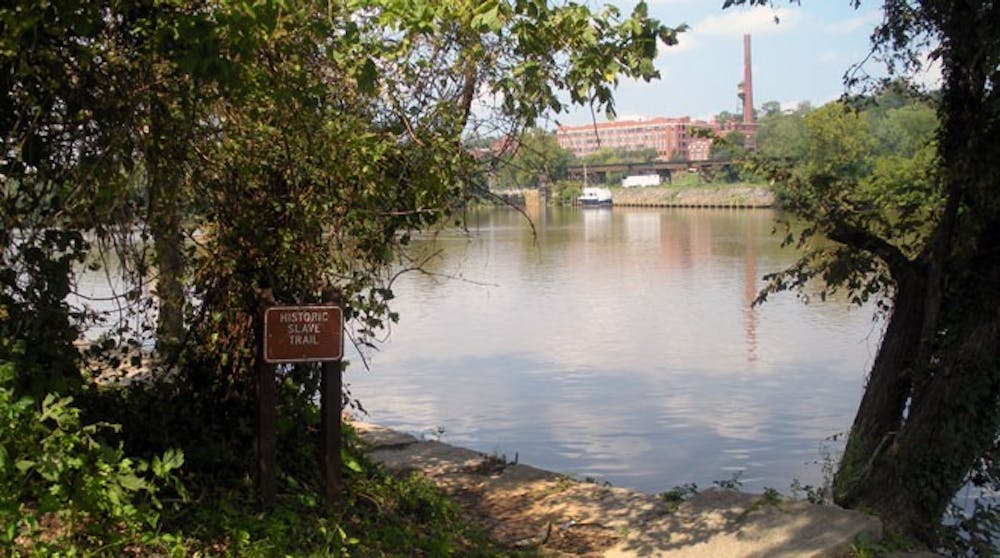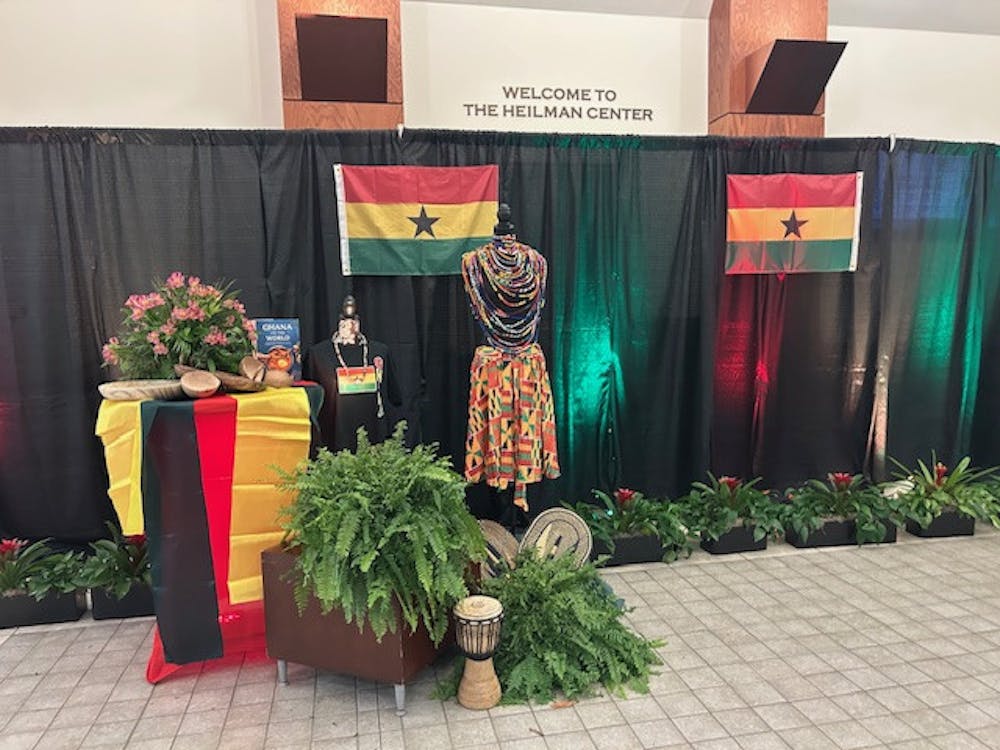While a group of teenage boys cast fishing hooks into the James River at the Manchester Docks, I somberly gazed toward the city, contemplating the first view that African slaves had of Richmond.
"This view has not changed in over 200 years," said Ralph White, manager of the James River Park System. "There is something powerful about standing in the exact same place on the dock where these slaves had their first glimpse of the city after being unloaded."
The Manchester Docks marked the start of my adventure on the Manchester Slave Trail, a 1.5 mile path that traces the journey slaves took to reach downtown holding facilities during the late 1700s and 1800s.
As a major artery into the heart of the nation, the James River was the easiest way to import and export slaves into and out of the U.S. White said that the Manchester Docks area had been the less desirable side of Richmond and was consequently used for slaves.
The slave ships reached the docks between six weeks and two months of travel. The slaves were chained together with only 23 inches of personal space. They were given very little food and forced to defecate in their clothing, White said.
"There was a 35 percent chance of death on the slave ships," White said. "It is said that you could smell them coming from miles away."
Although the importation of African slaves was banned in 1778, the Virginia slave trade turned to the interstate market. In 1820, Richmond was the nation's leading exporter, selling an average of 10,000 slaves each month, White said.
Today the river and the docks are still blemished with the scars of slavery, White said. Because of rain and erosion, the clear water of the James River is now brown like the skin of the slaves and, with the exception of fishermen talking, the once busy dock is now silent like the voice of the slaves, he said.
Upon leaving the docks, I continued through a narrow, winding pathway in the woods. The wooded area was the site of the first plantation in Richmond, the Falls Plantation. White said that during the 1800s the land would have been open with hardly any trees in sight.
Since the slaves were unloaded at night so that the white population was not disturbed, they walked the trail chained together with cramped muscles and only the light of a torch, White said.
"When I take a group on a tour, I usually have them walk silently with their hands on the shoulders of the person in front of them," White said. "This forces them to look to the ground and shows the loss of freedom that the slaves suffered."
After I reached the end of the woods, I walked uphill passing the Interstate 95 Bridge and then the Mayo Island Bridge. Today the sound of car engines replaces the old shouts of boatmen, the clatter of wagon wheels and the crack of whips on draft animals, White said. These new noises emphasize the changes and progress that the city has made since the time of slavery.
Enjoy what you're reading?
Signup for our newsletter
The next stop on my journey was the Kanawha Canal, which was dug by slaves and Irish men, White said. The canal draws attention to the intense labor that the slaves endured as they dug the canal by hand without the convenience of modern machinery.
As I walked along 15th Street, I passed a building that was used for slave auctions. The building was characterized by its arched doorways, which were typical of the 1800's architecture, White said.
"The slave auctions were like theater," White said. "They would advertise and people would come from all over to witness the melodrama of a woman being torn from her children or stripped naked and sexually harassed."
An older slave would sell for $150, a field worker for $250, a strong middle-aged man for $750 and a strong young man for $1,200, White said. "Fancy girls," or young women used as sex slaves, were sold for $2,500. During the 1800s, the average family made $1,000 a year, so slaves were very expensive.
Next, the trail led me to the 15-foot bronze Reconciliation Statue of two people in an embrace. On the sides of the statue are engraved images of slave boats, chains and a triangle to symbolize the trade route between England, Africa and the U.S. There are identical statues in Liverpool, England and Benin, West Africa to act as a formal apology for slavery, White said.
At the intersection of 15th and East Franklin streets, I reached my final destinations, Lumpkin's Jail and the Burial Ground for Negroes. Lumpkin's Jail, also known as the "Devil's Half Acre," was a holding facility for slaves. On the property, there were two dormitories, a kitchen, a laundry room, a supply shed and an office with a torture chamber, White said.
In the torture chamber, the wardens would pull down a slave's pants and whack him with a splintered board that left blisters on his behind. Then they would rub him down with salt, which caused extreme pain, White said.
"They didn't whip their backs because the scars would bring down their worth at the auctions," White said. "A scar represented a troublemaker."
The site of Lumpkin's Jail became the first school for former slaves in 1867. It then became Virginia's first institution of higher learning for African-Americans, Virginia Union University. Virginia's first African-American governor, Douglas L. Wilder, graduated from Virginia Union University, White said. The now vacant land represents the progression of slavery from the docks to the statehouse.
The Burial Ground for Negros was the site of the town gallows as well as where the slaves were buried. The bodies in the burial ground have been excavated and the site appears to be nothing more than a patch of grass that no one wants the responsibility to maintain, said Peter Bruce, chief of maintenance for the James River Park System. Although the land has been forgotten, people still adorn the ground with memorials to remember the price of slavery.
"We cannot solve the problem unless we own up to what took place and that is what we are doing with the slave trail," White said. "There has been a lens that has obscured slavery, but this trail reveals. Look around. There are scars of slavery everywhere."
Contact staff writer Erin Moyer at erin.moyer@richmond.edu
Support independent student media
You can make a tax-deductible donation by clicking the button below, which takes you to our secure PayPal account. The page is set up to receive contributions in whatever amount you designate. We look forward to using the money we raise to further our mission of providing honest and accurate information to students, faculty, staff, alumni and others in the general public.
Donate Now



